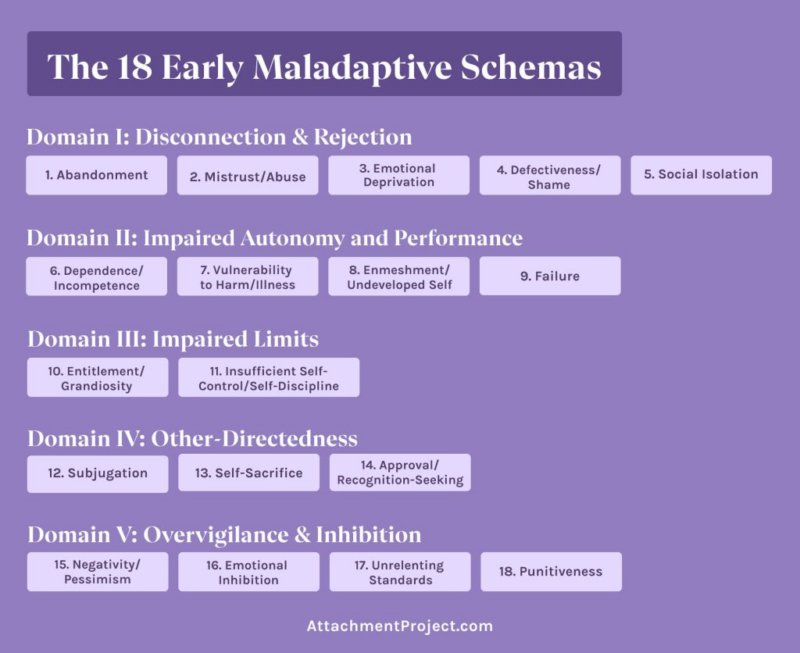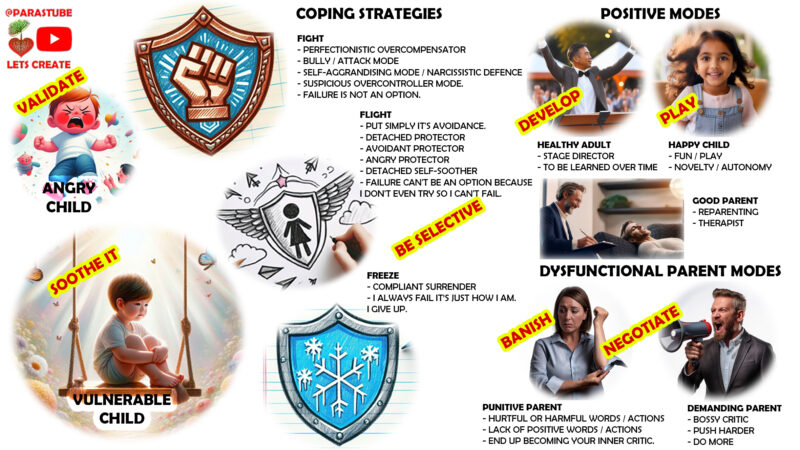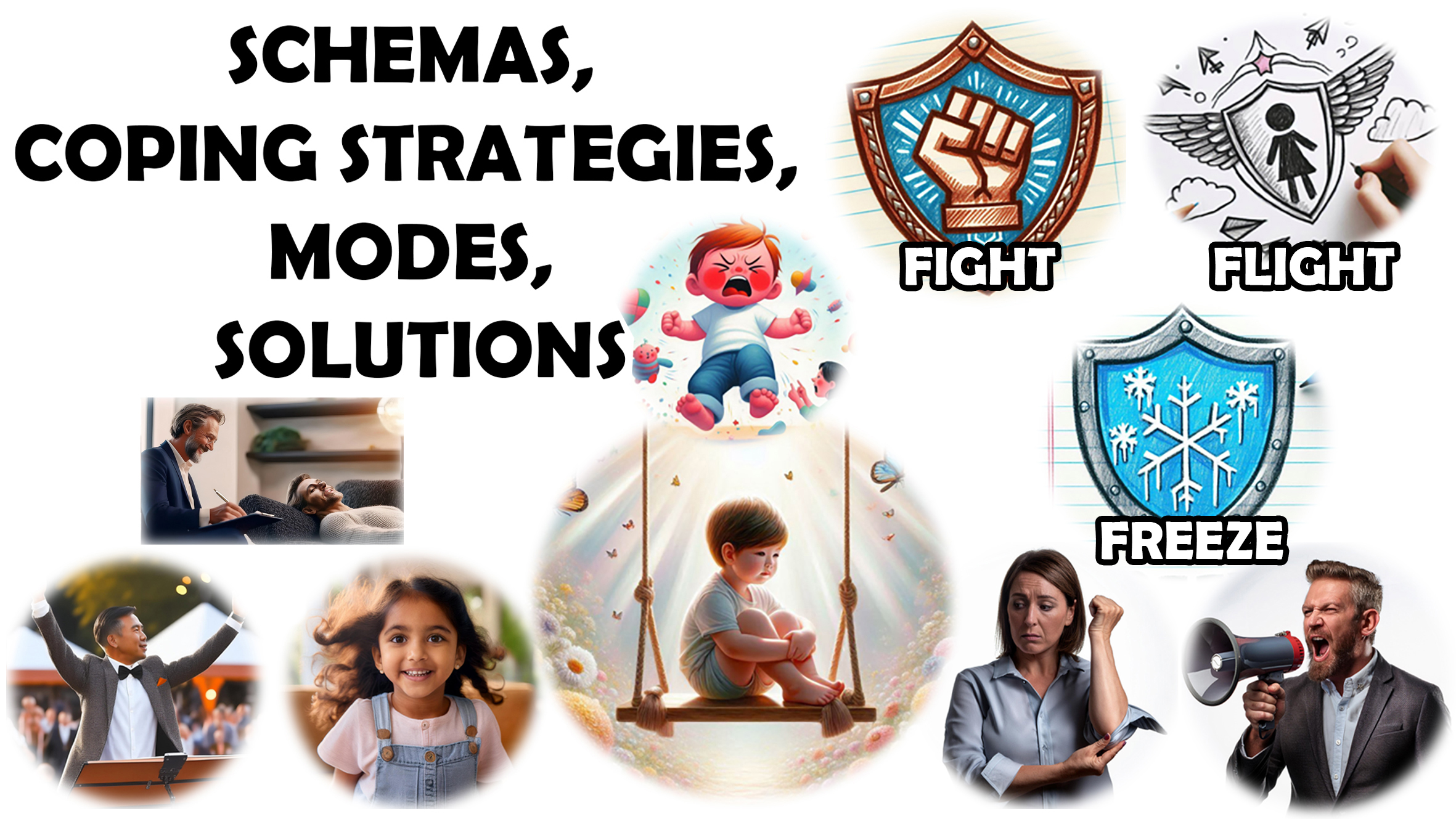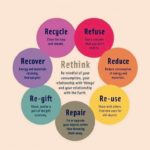Amazon #ads

This is from schema mode therapy taken from Joan Farrell and Ida Shaw. Our schemas are our blueprint on how we organise information. We all have schemas and that is how we understand the world.

18 Maladaptive Schemas
Domain 1 – Disconnection & Rejection
1 – Abandonment
2 – Mistrust / Abuse
3 – Emotional Depravation
4 – Defectiveness / Shame
5 – Social Isolation
Domain 2 – Impaired Autonomy and Performance
6 – Dependence / Incompetence
7 – Vulnerability to Harm / Illness
8 – Enmeshment / Underdeveloped Self
9 – Failure
Domain 3 – Impaired Limits
10. Entitlement / Grandiosity
11. Insufficient Self-Control / Self-Discipline
Domain 4 – Other-Directedness
12. Subjugation
13. Self-Sacrifice
14. Approval / Recognition-Seeking
Domain 5 – Overvigilance & Inhibition
15. Negativity / Pessimism
16. Emotional Inhibition
17. Unrelenting Standards
18. Punitiveness
Amazon #ads

The Vulnerable Child
The vulnerable child mode is attached to everything. It’s going to have a mood and a behavioral component attached to it. When we get scared, worried, etc. It will never leave us.
The Angry Child
The angry child links with the vulnerable child. This is because of their unmet needs. The tantrum comes in to signal that unmet need/s. Now if parents or adults are not in tune with this they’ll not meet the needs and instead punish or ignore.
Coping Strategies – Fight, Flight, Freezes
These 3 are all to protect the vulnerable child.
Fight
– Perfectionistic Overcompensator: Over compensate to avoid drama like doing things perfectly, start early, end late, please everyone. This can lead to burnout.
– Bully / attack mode which can be verbal or physical.
– Self-Aggrandising mode can be considered as narcissistic defence. Show offs have a very vulnerable child.
– Suspicious Overcontroller mode has plans B, C, D and E.
– Failure is not an option.
Flight
– Put simply it’s avoidance.
– Detached protector: It’s a form of psychological shutdown. If I don’t feel anything I won’t have to get in touch with my vulnerable child because it’s too scary, overwhelming and too intense.
– Avoidant protector: This is the flip side and is more physical like avoiding going to parties.
– Angry protector: The differentiator to angry child is that angry protector will push people away by being scary and intimidating. That way people can’t get close, can’t get to know me and then hurt and abandon me.
– Detached Self-Soother: They get into addictive behaviours or risky behaviours that are a vulnerability but not as overwhelming as getting in touch with the vulnerable child. Usually physical and more manageable.
– Failure can’t be an option because I don’t even try so I can’t fail.
Freeze
– Compliant surrender: This is their only strategy which is give up. Just go with it.
– I always fail it’s just how I am. I give up.
Amazon #ads

Dysfunctional Parent Modes – When these parent modes happen the above responses you use help you deflect and it doesn’t always work.
– Punitive parent: Children aren’t born hating themselves. How they talk to themselves come from external sources. So this punitive parent is just a term for all the negative things the adults with authority in your life have shown and/or been critical towards you. They either said hurtful or harmful things or there was an absence of positive things. (More info here – Addiction, Mental Health, Autoimmune Diseases, Childhood Trauma and so much more – Gabor Mate. That becomes our inner critic where you keep telling yourself you’re not good enough, you can’t do it, etc.
– Demanding parent: Bossy critic, push harder, do more.
Positive Modes – You will need to reintroduce these modes.
– Healthy Adult: This is the part we can control and be a stage director to control all the mentioned characters. So you have fight, flight, freeze and healthy adult. You need to learn this one over time which is why I have my blog and live video sessions of all the work I’ve done.
– Happy Child: Where you get your sense of fun, play, novelty and autonomy.
– Good Parent: Along with schema therapy uses the concept of re-parenting. (Paras note: You can see the work I did on myself here – Self-Parenting / Reparenting for Personal Growth, Correcting Wrong Conditioning, Forgiving Toxic Parenting & Healing Childhood Trauma
The good parent is represented by the therapist.
Solutions
– Vulnerable Child: Sooth it. Allow yourself to experience the vulnerability.
– Angry Child: Validate! They’re usually feeling unheard so let them talk and you’ll uncover the vulnerability/vulnerable child.
– Fight, Flight, Freeze: They don’t need to be switched off, you just need better control of them and know which one to use. Be selective.
– Punitive Parent: Banish them. Get rid of them. Tell your inner critic to go away, shut up, you don’t want to hear it. Imagine kicking it off a cliff.
– Demanding Parent: Negotiate. You need that voice for when you need to get things done. (Paras note: I have a post on how to balance the courage/dad and well-being/mom to help.)
– Healthy Adult: Develop and flourish. More on being an adult: Games People Play: The Psychology of Human Relationships by Eric Berne
– Happy Child: Let it out, PLAY!
Amazon #ads






